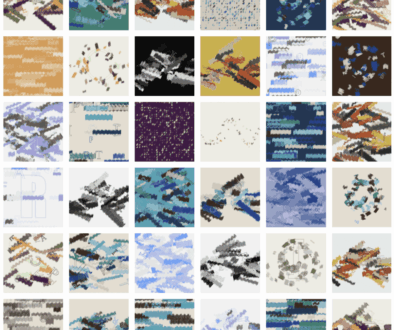Making NFTs the centerpiece of the Creator Economy
Jonathan Chen, Head of Operations at Creaticles
The momentum powering the Creator Economy boom shows no signs of slowing down, nor does the proliferation of NFT content across a myriad of platforms. The ball has never been more firmly in the court of creators, who now have ample online canvas space to ply their trade and monetize their bespoke content. As I write this, many musicians and global personalities are tapping into NFTs to strengthen their earning power, and in doing so, they’re unearthing unconventional revenue streams for creators.
I believe it is now the turn of artists – OG’s of the Creator Economy – to stake their claim within the NFT realm. In today’s highly competitive economy, artists are increasingly forced to look beyond traditional avenues to monetize their talents. The evolving contours of the NFT space are providing fertile ground for digital artists to showcase their skills to a captive global audience and unlock unique revenue-generating opportunities. One such example is the ongoing intersection of social media and NFTs, which gives expression to the scale of opportunity on the table for digital artists.
Meta CEO Mark Zuckerberg recently indicated that NFTs will soon be a feature on Instagram, after Facebook last year announced plans to support NFTs. As the ‘Metaverse’ era begins to take shape, expect to see many more household name brands announce their entry into the NFT market. Another hot social media trend is the widespread adoption of NFT profile pictures, or PFPs for short. Twitter has enabled users to have NFT PFPs, and recently released a tool to verify PFP authenticity. One of the most high profile PFP examples is Bored Ape Yacht Club’s (BAYC) collaboration with Adidas. As well as this, iconic rapper Eminem recently made headlines when he purchased ape artwork that depicted his likeness, and subsequently uploaded it as his Twitter profile picture. From the man who called out all the other Slim Shadys for ‘just imitating’, his NFT move may have triggered other musicians and fans to follow suit.
With large swathes of music artists tapping into the power of NFTs, there is a real and present opportunity for NFTs to play a major role in the evolution of the music and entertainment landscape, particularly as Spotify signals its intent to enter the NFT space. Renowned music artists such as Kings of Leon have already sold NFTs of their music, and we can expect a conveyor belt of bands creating NFTs around specific pieces of music, and releasing them as a limited edition material. All of the above is great news for digital artists, whose talents will be in high-demand to create innovative designs for these releases.
NFT art is also a hot commodity for crypto platforms, and the demand for high quality NFT art is currently at fever pitch. More and more crypto projects are looking to strengthen community engagement through meme and NFT contests, giving artists another virtual stage to showcase their work. For crypto platforms, NFT content has become an indispensable component of successful community relations activities, and this trend is set to endure in the long term.
Since the emergence of NFTs as a new artistic format, an exciting collision between the traditional and digital art worlds has been on the cards, as NFTs provide artists with an exciting avenue to thrive outside the confines of the traditional gallery framework. Together, museums and artists can be at the forefront of artistic innovation, extending the joy of art far and wide, through NFTs.
We really are only at the tip of the iceberg in terms of mass NFT adoption, so the opportunities for artists to benefit from the NFT revolution are potentially boundless. Looking ahead, there is a beautiful synergy between the Creator Economy boom and digital artists, empowering them to unlock new income streams that extend well beyond conventional means. These opportunities also open the door for artists to compound their earnings with future sales of their art work on secondary marketplaces, and usher in a new era of creator autonomy.

